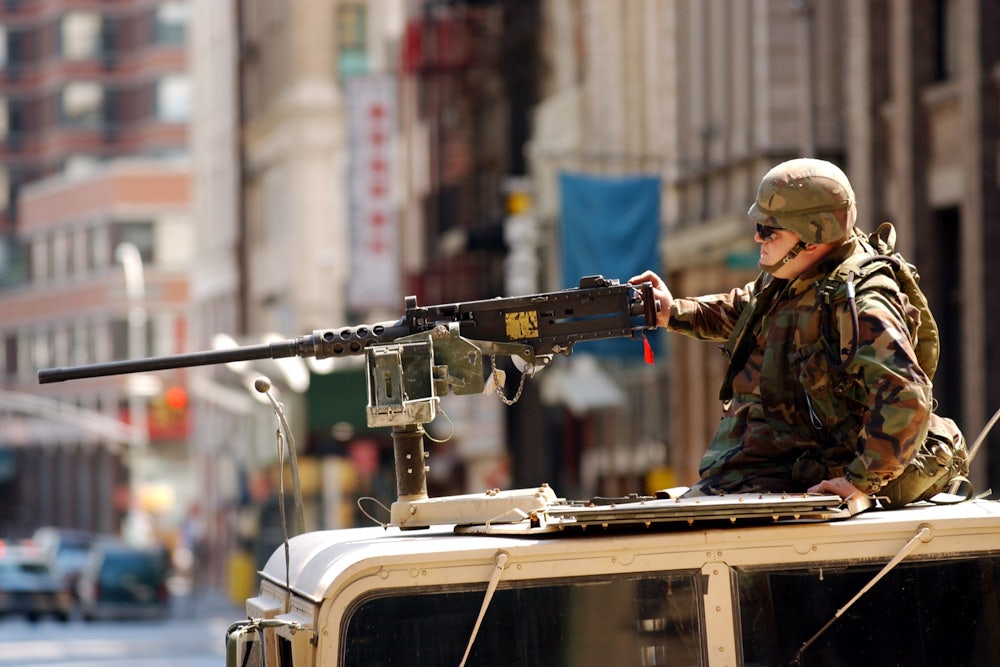Hours after the catastrophe, we were told that America would never be the same. Freedom had allowed terrorists to commit the unthinkable, and therefore freedom would have to be curtailed. The secretary of transportation announced that travelers must prepare for a massive increase in security, including “higher levels of surveillance, more stringent searches.” A former director of the FBI invoked Burke on “ordered liberty.” Bill Kristol of The Weekly Standard called ominously for “a change in certain habits we have here at home.”
If losing some of our liberties made us safer, then these arguments would demand serious consideration. But grim experience in Europe and in America suggests that often it doesn’t: Galvanizing acts of terrorism tend to provoke sweeping increases in domestic surveillance that change the character of civic life without deterring or preventing future terrorist attacks. By learning from the excessive and ineffective responses of the past, America can focus its energies on retaliating against the guilty rather than transforming life for the innocent.
Although America, until now, has been largely spared, other Western democracies have long struggled with how to respond to threats from suicidal terrorists in urban centers. And the responses have not been encouraging. In Britain, for example, after a series of IRA bombings in the 1990s, Tory and Labour governments massively increased domestic surveillance, including the proliferation of cameras in public places. Although the City of London created a “ring of steel” designed to catch terrorists by photographing every driver who enters and leaves the city, the spy cameras have failed to catch a single terrorist. Instead, they are used primarily to catch traffic offenders and low-level criminals.
America’s last national alarm about terrorism at home took place during the Red Scare of the 1920s. After an Italian anarchist blew himself up outside the house of Woodrow Wilson’s attorney general, A. Mitchell Palmer, and other politicians received bombs in the mail, Palmer convinced himself that Bolshevik agents were conspiring to overthrow the U.S. government. Aided by his special assistant, J. Edgar Hoover, Palmer used the Espionage Act of 1917 and the Sedition Act of 1918 to clamp down on suspected domestic radicals. In 1919 and 1920, the Palmer raids led to the arrest of thousands of alleged Communists, many of whom were held without trial before being released or deported. None was conclusively proved to be a terrorist. During the 1920s this magazine was one of the most tenacious voices against the excesses of the Red Scare. In editorials like “Is Palmer Guilty of High Crimes?” and “The Red Hysteria,” the editors warned that “the new inquisitors” were committing unlawful searches, seizures, and mass arrests without warrants, and were seeking to prosecute unpopular opinions rather than protecting America against force and violence. Although the Supreme Court upheld most of the convictions under the Espionage Act and the Sedition Act, some of the later decisions drew spirited dissents from Justices Holmes and Brandeis that became the foundation of our modern tradition of free speech. In the end, after the most serious threat to domestic liberties since the Alien and Sedition Acts, Americans lost patience with Palmer, who was accused of fanning the Red Scare in a failed attempt to win the Democratic nomination for president in 1920.
It is too soon after the infamy of September 11 to think about anything except identifying the terrorists and bringing them to justice. And it is also too soon to say whether the Congress and the president will respond to the calamity as our European allies have done: with popular but ineffective increases in domestic surveillance that make the innocent pay for the crimes of the guilty. But our constitutional freedoms may be about to face their most serious test in several generations. We can’t protect ourselves from suicide bombers by blindly surrendering our liberty. To do so would only ensure the victory of fanaticism and the destruction of all that makes America uniquely worth defending.
This article originally ran in the September 24, 2001 issue of the magazine.
